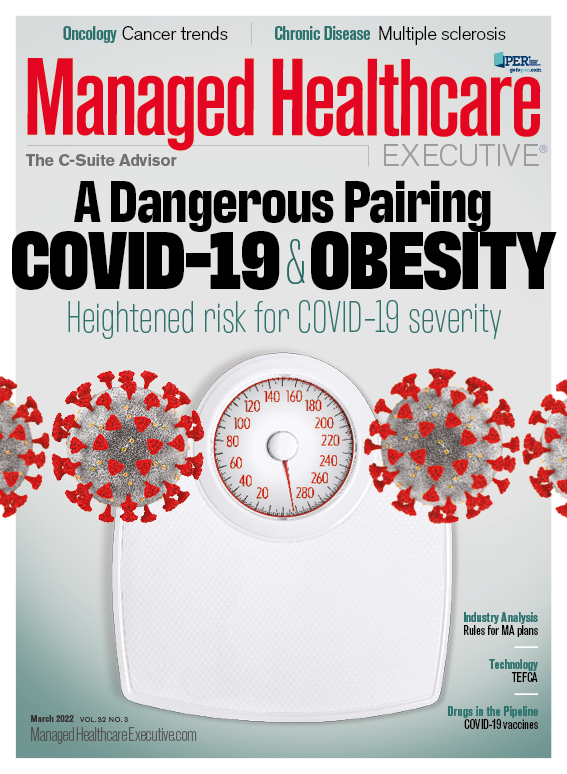- Drug Coverage
- Hypertrophic Cardiomyopathy (HCM)
- Vaccines: 2023 Year in Review
- Eyecare
- Urothelial Carcinoma
- Women's Health
- Hemophilia
- Heart Failure
- Vaccines
- Neonatal Care
- NSCLC
- Type II Inflammation
- Substance Use Disorder
- Gene Therapy
- Lung Cancer
- Spinal Muscular Atrophy
- HIV
- Post-Acute Care
- Liver Disease
- Pulmonary Arterial Hypertension
- Safety & Recalls
- Biologics
- Asthma
- Atrial Fibrillation
- Type I Diabetes
- RSV
- COVID-19
- Cardiovascular Diseases
- Breast Cancer
- Prescription Digital Therapeutics
- Reproductive Health
- The Improving Patient Access Podcast
- Blood Cancer
- Ulcerative Colitis
- Respiratory Conditions
- Multiple Sclerosis
- Digital Health
- Population Health
- Sleep Disorders
- Biosimilars
- Plaque Psoriasis
- Leukemia and Lymphoma
- Oncology
- Pediatrics
- Urology
- Obstetrics-Gynecology & Women's Health
- Opioids
- Solid Tumors
- Autoimmune Diseases
- Dermatology
- Diabetes
- Mental Health
Why Managed Care Cares About Prescription Drug Spending
When managed care got started in the early ’80s, the focus was on physician and hospital services. Primary care doctors were positioned as gatekeepers, controlling referrals to specialists. Insurers came under a lot of criticism for shortening hospital stays. Now much of the managed care energy is trained on drug costs.
When managed care got started in the early ’80s, the focus was on physician and hospital services. Primary care doctors were positioned as gatekeepers, controlling referrals to specialists. Insurers came under a lot of criticism for shortening hospital stays. Now much of the managed care energy is trained on drug costs, and a recent report oprescription spending from the Congressional Budget Office (CBO) offers some clues as to why.
In 1980, nationwide spending on prescription was about $30 billion and accounted for about 5% of total U.S. spending on healthcare. By 2018, the spending had increased more than tenfold to $335 billion and accounted for 10% of all healthcare spending. On a per capita basis, spending (with rebates and other discounts factored in) on prescription drugs increased from $140 per year in 1980 to $1,073 in 2018.
The CBO report, which came out in January, delves into some of the reasons for the rise in prescription spending. Starting in the mid-1990s, it was fueled in part by the advent of blockbuster drugs — drugs with over $1 billion in annual sales — for common conditions: statins for high LDL cholesterol, ACE inhibitors for high blood pressure, antidepressants for depression and other mental health conditions. When those drugs hit the “patent cliff” and lost patent protection, generics hit the market and put some downward pressure on price spending. The steep upward pitch of prescription drug spending plateaued in the mid-2000s, and there were decreases for several years. In 2006, spending on prescription drugs accounted for 10.5% of total healthcare spending. By 2013, it slipped to a 9.2% slice of the pie.
In late 2013, there was an inflection point.Spending on prescription drugs started to go up again when Sovaldi (sofosbuvir), the hepatitis C drug, came on the market. It was priced at $84,000 for a 12-week course. Other hepatitis C drugs followed. After that jolt, the CBO report shows another plateau in spending from 2015 to 2018, despite the growing number of prescriptions being written.
One important proviso about these figures: As the CBO report points out, they do not include expenditures on drugs in nonretail settings such as physician offices, clinics and hospitals. Expensive specialty drugs — medications for rare conditions — have proliferated recently and are bought and sold in nonretail settings.

Most Real-World Studies Report Positive Outcomes of Rituximab Use in Multiple Sclerosis
May 8th 2024Although several clinical trials have confirmed the safety and efficacy of rituximab in oncology and autoimmune disease, and even as off-label use in MS, real-world evidence is still necessary to help guide clinicians and managed care professionals in their treatment and coverage decision-making.
Read More
